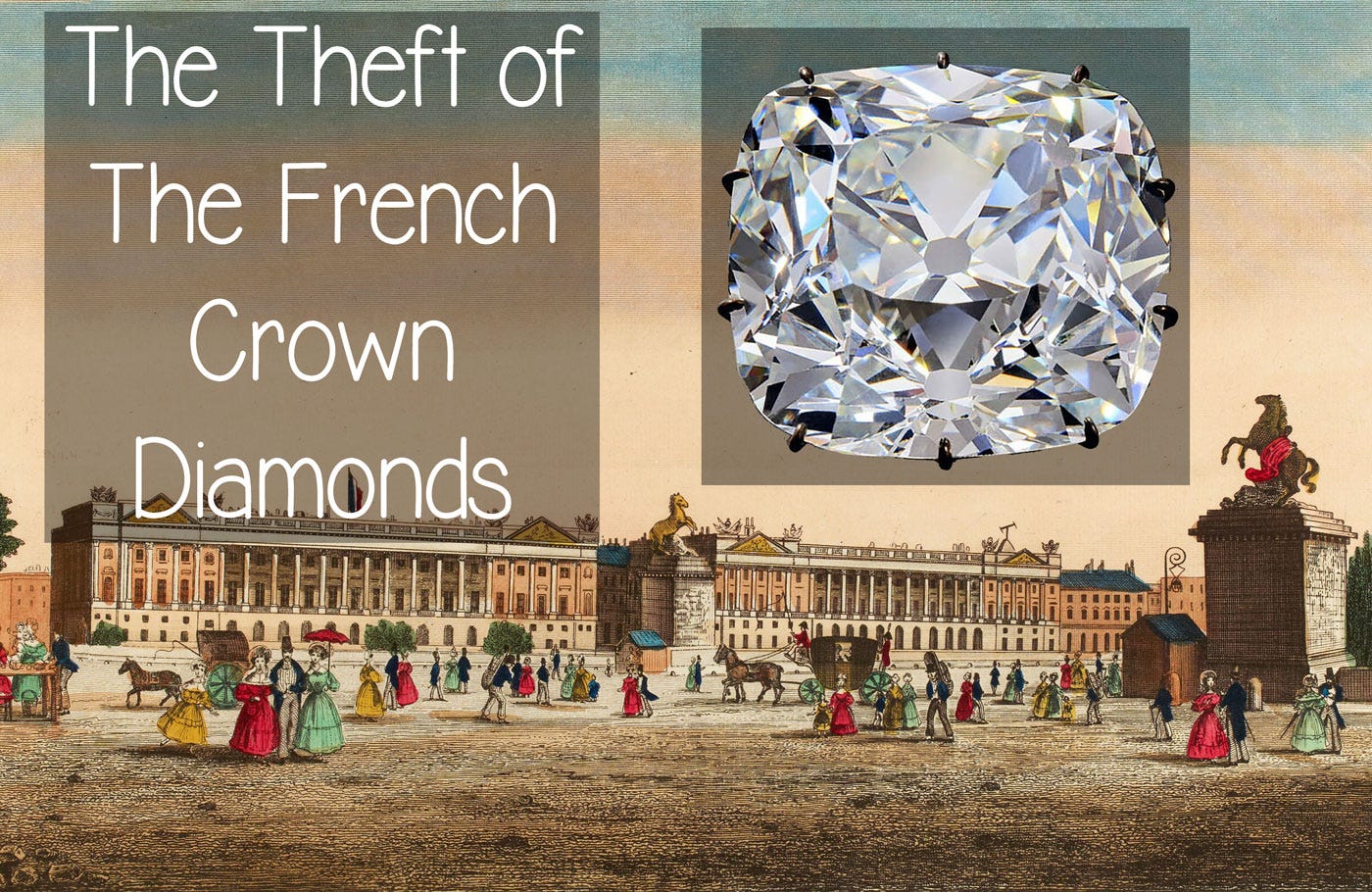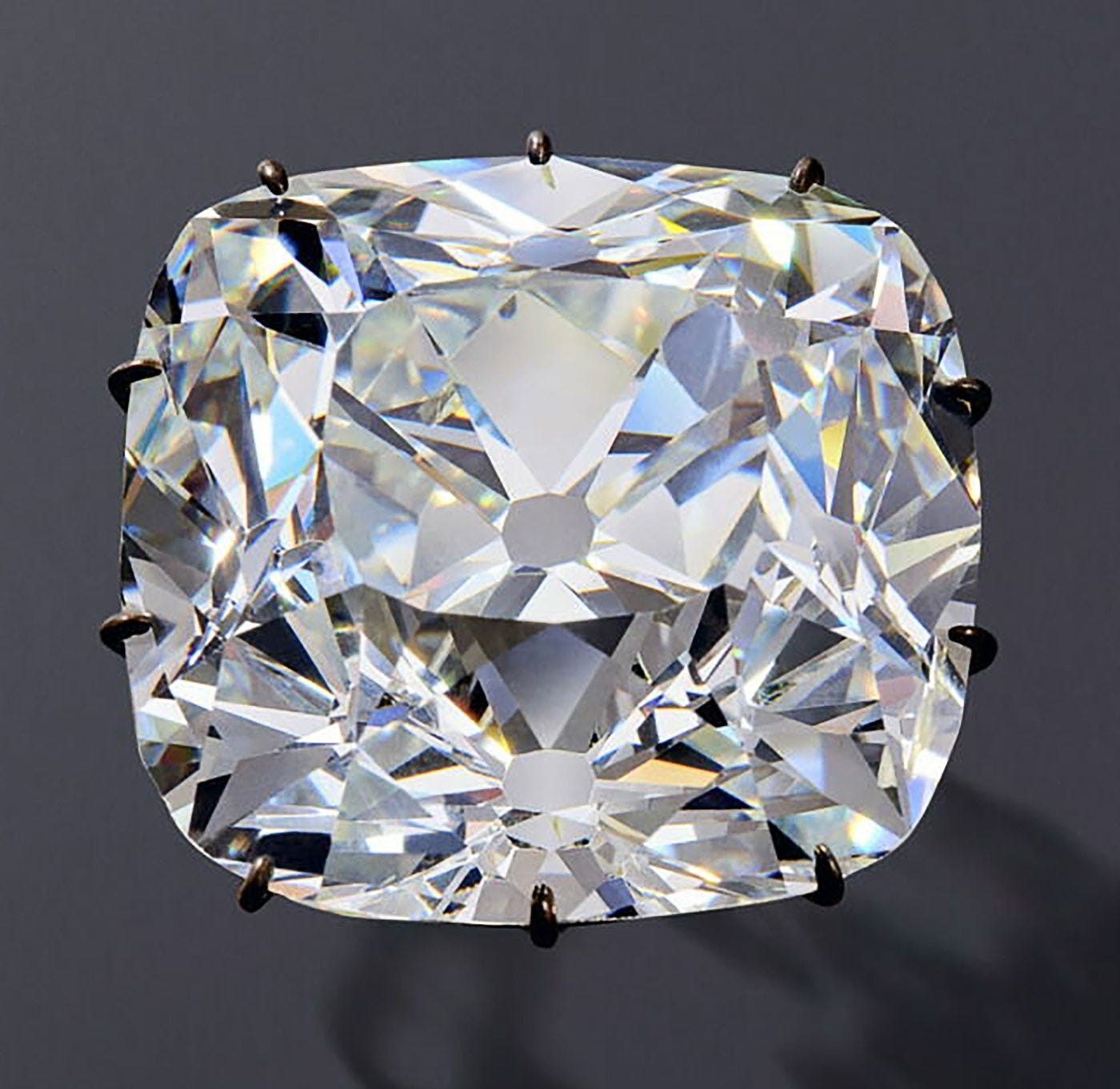We are in 1792, in Paris, in the midst of the Revolution's chaos. The Place de la Concorde is mainly unguarded.
We focus on the large building on the right, the Garde-Meuble de la Couronne.
That's French for 'furniture depository of the Crown.' While you rent a storage unit for your furniture and knick-knacks, French Kings needed an entire building.
One reason is that Versailles was about inventing French luxury and always being at the forefront of style.
Regularly commissioning new interiors for Versailles and other royal castles meant ample storage space was needed.
That was the Garde-Meuble de la Couronne Place de la Concorde. Everything belonging to the King and Queen that was not in use was there.
On that day, that included the Crown Diamonds.
The inventory included 9,547 diamonds and 1,100 other gemstones. Unlike commodes, valuable objects that could easily fit in a pocket.
The three most valuable diamonds were:
- the Régent, a 140-carat diamond, the largest in Europe.
- the Bleu de France, a 69-carat blue diamond, one of the rarest gemstones ever found.
- the Sancy, a 55-carat diamond.
Their value? The Régent alone was worth half of the entire gem collection...
The building was sealed and considered safe. There were no soldiers permanently stationed outside.
Early Christmas for Paris' riffraff
Midnight, Place de la Concorde. Twenty ruffians throw ropes to the first floor.
The only separation between them and unthinkable wealth is a wooden shutter. As they were pros, they brought a saw, cut off a hole, and opened the window.
Behind it, Father Christmas kindly laid out 10,000 gems over five rooms. Even bad boys returned home with gifts, as many as their pockets could take.
The Champs Elysées nearby was a place of ill repute where ladies of the night plied their trade.
Diamonds, booze, and loose women, Deliquents Paradise. The best party in town lasted an entire week.
Until, as was bound to happen, the ruckus did get noticed.
However, by then, the value of the royal collection had dropped from 24 million pounds to about 600,000 pounds.
Recovering the Crown Diamonds
The threat of the guillotine—also Place de la Concorde—motivated some ruffians to rat on the others and reveal the hiding places.
The Régent and the Sancy were recovered. But the Bleu de France was never seen again.
Do you remember yesterday's story about fake diamonds and an actual crown?
Do you notice the big lump of glass at the front of the crown?
The Régent and the Crown of Louis XV
How did this wonder of nature find its way from India, then 410 carats, to Paris, weighing 140 carats?
In India, Golconda is a byword for the most beautiful diamonds. Mother nature made it so that only 2% of diamonds are genuinely pure.
And when they are, they tend to grow big and to be beyond perfect.
If you have been told that a D-Flawless diamond is “the best,” then sorry to have to tell you that there’s better, Golconda.
Of course, the Régent is a Golconda.
What comes next is likely a legend, but it is too good a story to ignore.
In 1701, a slave found a 410-carat diamond—about the size of a nice apricot—that was his ticket to freedom.
He hid the diamond inside his leg, bandaged it, and ran to the sea. There, he proposed a trade to a captain: half the proceeds if he would help him be free.
No surprise with what comes next: the slave was thrown overboard, the diamond was brought to London and cut into the 140 carats wonder above.
It was so expensive that even Louis XIV, a great gemstone collector, turned it down.
How expensive? Between the first sale in India, being cut in the diamond you see today, and the sale to the Regent of France, it went from £ 1,000 to £ 135,000.
Someone made a tidy profit.
Marie Antoinette and the Regent Diamond
Today, it is said that Diamonds Are a Girl's Best Friend. Not so fast.
The Régent financed France's military needs; it was a Crown Diamond; Napoléon had it set into his sword. That is not a plaything for a lucky lady.
Yet, Marie Antoinette wore it. As we will see in tomorrow's Daily Wonder, there is a story with Marie Antoinette and diamonds that even Hollywood scriptwriters could not have imagined.
A demain!
CALL TO READERS
Do you know where the Bleu de la Couronne de France, the largest blue diamond ever discovered and one of the world's most valuable gems, is today?
https://collections.louvre.fr/ark:/53355/cl010097015








